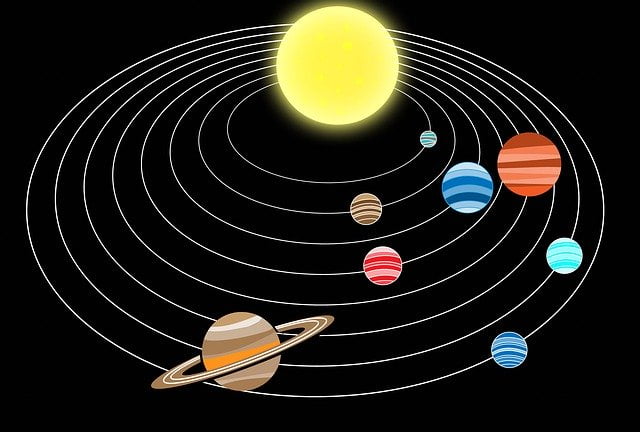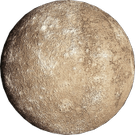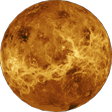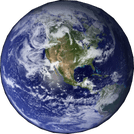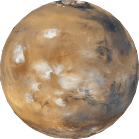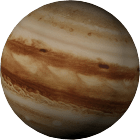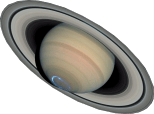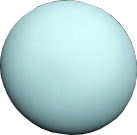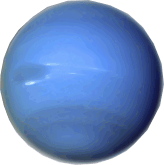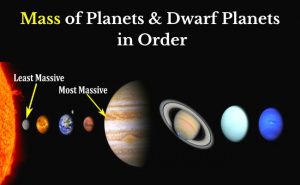Here we have given some planets questions with their exact and considerable answers. This article is specially related to our solar system planets questions with other planets information such as exoplanets (not belongs to our solar system) and rogue planets.
1. How many planets are there in the universe?
There are more than 100 billion galaxies in the universe and each galaxy has approximately 100 billion planets within it. So this way, there are 1022 planets in the observable universe. It would look surprising if we write it with 22 zero values 10,000,000,000,000,000,000,000.
Planets outside of our solar system are called extrasolar planets (exoplanets). So all the planets in the universe are exoplanets except our 8 solar system planets.
2. How many planets are in our solar system?
There are 8 planets in our solar system: Mercury, Venus, Earth, Mars, Jupiter, Saturn, Uranus, Neptune.
Before 2006 we used to read about 9 planets in the solar system. But the International Astronomical Union (IAU) excluded the planet Pluto and categorized it as a dwarf planet.
- Know here all about:- solar system planets.
3. Which planet has the most moons?
Planet Saturn has the most number of moon. It has a total of 82 known moons with a confirmed orbit. Only 53 moons have been named officially. Saturn’s moon ‘Titan’ is the 2nd largest moon in the solar system and it is larger than planet Mercury.
According to an estimation Saturn has millions of moonlets (moonlets are comparatively small natural moons that orbit a planet). It’s one of the most asked planets questions by the people.
Read about:- Saturn Moons: Number, Names, and Facts
4. Which planet does not have any moon?
Planet Mercury and Venus do not have any moon or satellite. Mercury is the nearest planet to the sun and Venus is the 2nd planet from the sun in distance. Both planets are called Inner Planets or Terrestrial Planets.
5. Which planet is the fastest in our solar system?
Mercury is the fastest planet and has a shorter period of revolution in our system. It completes one revolution around the sun in 88 days. The distance of this planet from the sun is around 58 million kilometers, which makes it the nearest planet to the sun.
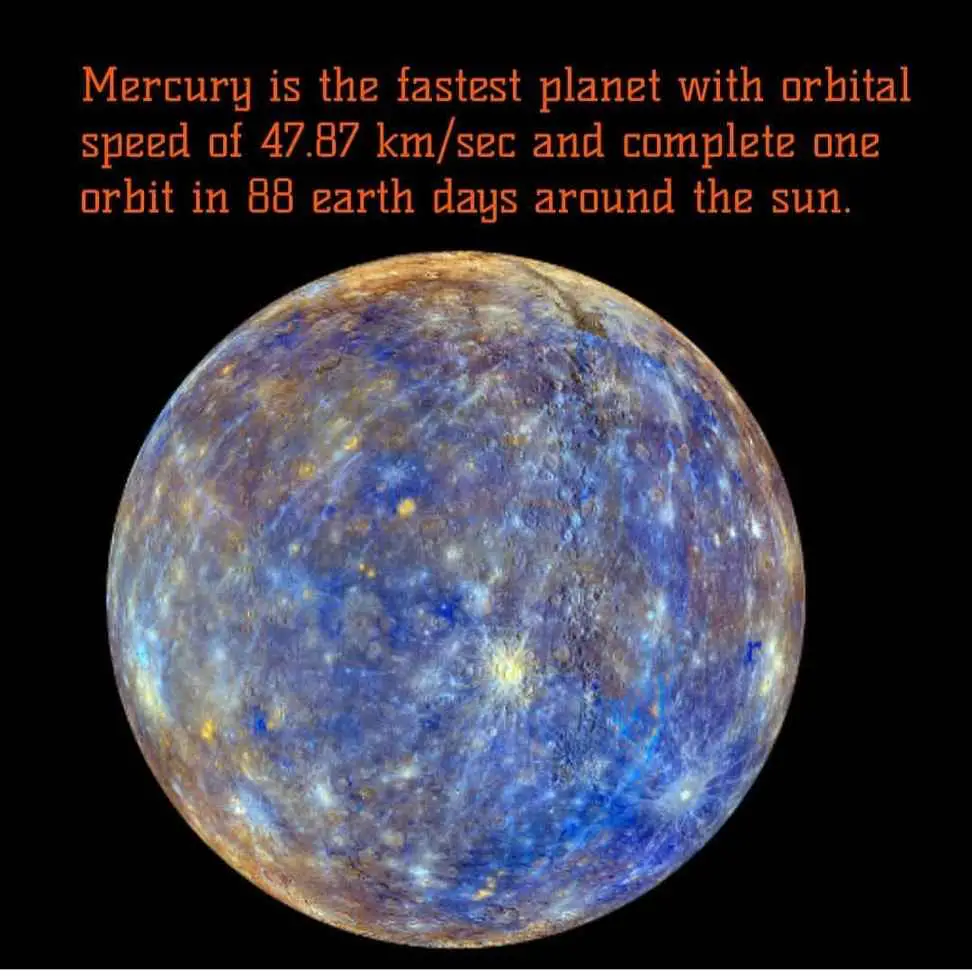
Know here: Revolution of Planets around the Sun.
6. Which planet is the largest in our solar system?
The largest planet in our solar system is Jupiter. The diameter of Jupiter is 1,43,000 km. It takes 11.9 years to complete one revolution around the sun. It has 79 known moons, in which the moon Ganymede is the largest moon/satellite of our solar system.
Check it also:- Jupiter Moons: Facts, Names, Numbers, and List
7. Which is the hottest planet in our solar system?
Venus is the hottest planet in our solar system. Though mercury is the nearest to the sun still it is not hotter than Venus. Planet Venus is hotter because it has more atmosphere than planet mercury has. The distance of the planet Venus is 108 million kilometers from the sun.
8. What are the nicknames of planet Venus and Why?
Planet Venus has 4 nicknames. It is known as Evening Star, Morning Star, Earth’s Twin, and Veiled planet.
It has the name ‘morning star and evening star’ because we can see the venus from the earth in the evening as well as in the morning.
Venus looks like the same as the earth in size and mass, so it is known as ‘Earth’s Twin’.
Venus is surrounded by thick atmospheric clouds around it, so it is called ‘Veiled Planet’ because ‘veil’ means ‘to cover’.
9. What is the order of the planets from the sun in our solar system?
Our Solar system has 8 planets. In order to increase the distance from the sun, these are Mercury, Venus, Earth, Mars, Jupiter, Saturn, Uranus, Neptune. So according to this order, Neptune is the outermost planet of our solar system. These 8 planets revolve around the sun in an orbit.
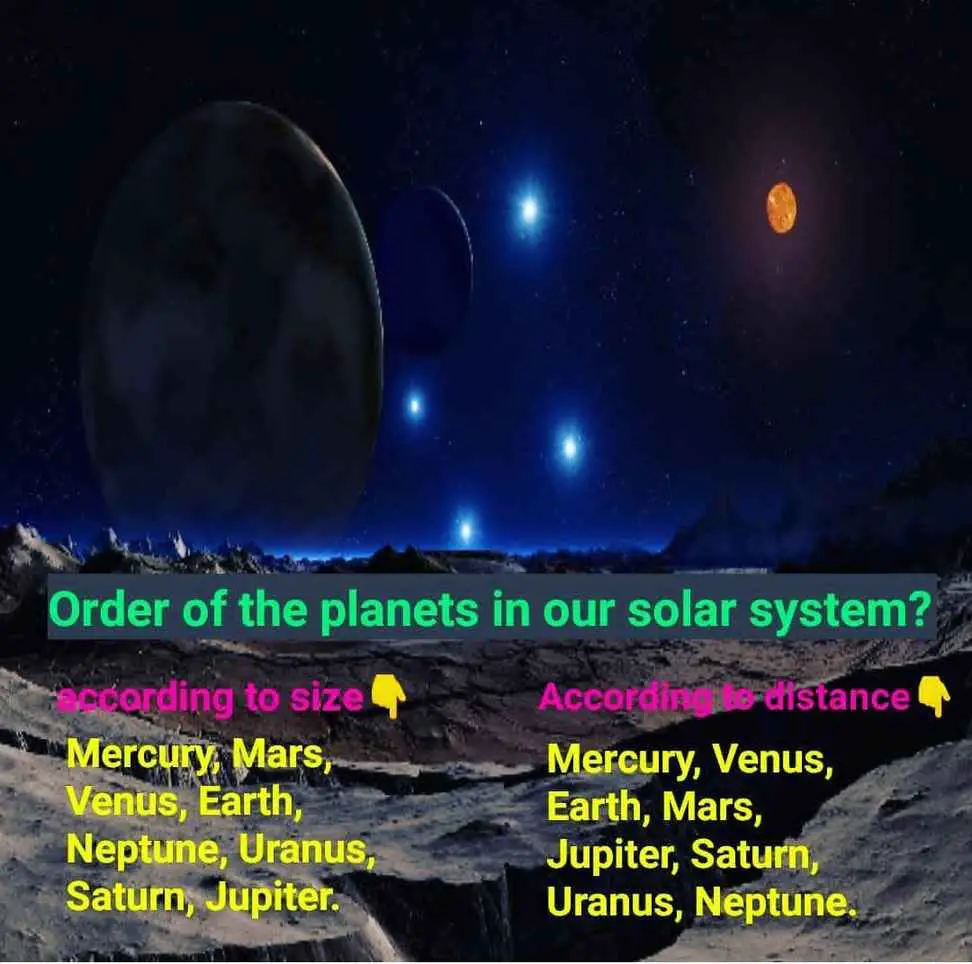
10. What is the order of the planets according to size in our solar system?
In order to increase the size (according to diameter) of our 8 planets are Mercury, Mars, Venus, Earth, Neptune, Uranus, Saturn, and Jupiter. So, Mercury is the shortest planet, and Jupiter is the largest planet. The diameter of the mercury is 4878 km, whereas the diameter of Jupiter is 142800 km.
11. How many planets have rings in our solar system?
All the giant planet of our solar system has rings. Planet Jupiter, Saturn, Uranus, and Neptune. Saturn has the most beautiful ring system. The ring system of Saturn is extended from 6630 km to 120700 km outwards to its equator and divided into many groups. The rings of Jupiter, Uranus, and Neptune are smaller, darker, and fainter than Saturn’s ring system.
12. Which is the farthest planet from the sun?
Neptune is the farthest planet from the sun in our solar system. The average distance of the Neptune planet is around 4,501,000,000 km (2,796,471,300 miles) (30.10 AU) from the sun.It is the smallest in all giant planets with a diameter of 49245 km.
Neptune is an ice giant planet and it is the last discovered planet in our solar system. Pluto used to be the farthest or most distant planet in the solar system but now it is a dwarf planet. So Neptune is the farthest planet from the sun.
Must read about:- Closest and farthest distance of each planet from Sun
13. What are the inner planets?
Inner planets in our solar system are four: Mercury, Venus, Earth, and Mars (in order of increasing distance from the sun). These planets are also known as “Terrestrial planets”. They are solid in nature and made of rocky surfaces. The largest inner planet is our home planet ‘Earth’, whereas the smallest inner planet is Mercury.
Read here below about all inner planets:
14. What are the outer planets in order?
The outer planets in our solar system are four: Jupiter, Saturn, Uranus, and Neptune (in order of increasing distance from the sun). These are also called “Giant Planets” and divided into two different categories, 1. Gas giant planet, 2. Ice giant planet. Jupiter and Saturn are ‘gas giant’, whereas Uranus and Neptune are ‘ice giant’. These planets do not have solid surfaces and made of gases like hydrogen, helium, ammonia, methane, etc.
Read here below about all four outer planets:
So these were some important planet’s questions with their direct answers. If you have any suggestions or questions related to planets, ask in the comment. Else you can check here below for every solar system planets in the details.
